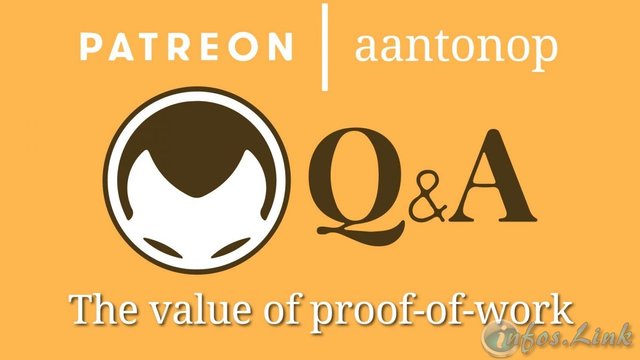
New week, new video Q & A by Andreas Antonopoulos . Today, the discussion revolves around mining and the various existing systems. The author of "Mastering Bitcoin" will present the interests of proof of work.
A little vocabulary
For the sake of clarity, we will first discuss the last questions asked in the video. What are the main differences between the POW - proof of work - and the POS - proof of stake ?
Mining : Mining is the writing of a block by one of the members of the network. It is therefore the fundamental operation of any block chain, which distinguishes it from a classical centralized system.
Consensus Algorithm: A consensus algorithm is a computer-based process used to reach agreement on the value of a single piece of data in a decentralized system . These algorithms are designed to ensure the reliability of a network with several unreliable nodes . Solving this problem - known as a consensus problem - is important in decentralized computing and multi-agent systems.
POW or proof of work : The POW requires energy outside the system . However, energy is a precious resource that has a cost . The POW therefore forces the miner to spend this energy in the form of work. In addition, the minor must prove that he has spent this energy through the POW to obtain a reward.
POS or proof of stake : The POS, instead of requiring the minor to spend energy, requires a deposit of cryptocurrencies into the system. Roughly, the miner sequesters cryptocurrencies - stake or "stake" - which will be blocked in the system for a certain number of blocks. This "deposit" will allow him to validate and register transactions. In doing so, he gets a reward proportional to his stake.
How does a free blockchain work ?
The Bitcoin miners are rewarded, but in a blockchain that keeps contracts doing the validation?
The underlying and essential question to which Antonopoulos will answer here and to know if there can exist a blockchain without minors . According to him, such a system can exist.
However, it will not be a decentralized blockchain , as this system will need trusted third parties for validation . The use of third parties for validation leads to the centralization of the model.
There is another alternative to the Bitcoin system. This is the POS , however this mechanism also involves rewards . These take the form of fees rewarding the risk taken to validate the rule.
In conclusion, there are two systems: one with reward, the other without . POW and POS reward systems allow competition between minors . It is this competition for rewards that guarantees the reliability of minors .
In a system without rewards, transaction validators still need to be reliable . It is therefore necessary to introduce a form of centralization with trusted third parties . In addition, this system is not a blockchain but a database .

Is it possible to have a cryptocurrency without blocks?
It is quite possible to have a numeric currency without blocks . In fact, the blocks are used only for the POW and the competition between minors . It is possible to do without a block if the consensus algorithm is different.
This is observed with the practice of decentralized registers - or DLT Distributed Leger Technology -. Indeed, they use signatures rather than mining . For this reason, some refuse to qualify the decentralized registers of blockchain .
In these registers, it is possible to create as many blocks as you want . As a result, blocks no longer matter and it becomes possible to attach transactions together. This is why DLTs are not considered blockchains because they do not require blocks or strings .
Will green energy reduce the costs of mining?
Mining can be done anywhere, especially now that it is possible to transfer crypto-assets via satellite . Since mining can take place anywhere in the world, miners will settle where electricity is least expensive . Where the difference between demand and production capacity is the greatest.
So yes, renewable energy can reduce the cost of mining, since this energy is less expensive to produce . The best mining opportunities are where alternative energy is produced because these sources are far away and the energy is difficult to transport . Miners settling in these areas will therefore have reduced energy rates. This is why Bitcoin stimulates significant investments in these energies around the world .
Is it possible to use the computing power deployed by the mining to perform other tasks at the same time?
There have been attempts to use mining algorithms to perform tasks that require large computing capabilities. For example the discovery of prime number of large sizes.
However, the Bitcoin algorithm has only one use. Prove to the rest of the world that the miner has deployed the amount of energy needed to secure the network . Antonopoulos refers to the "promise of the minor" . The miner promises to have validated, at his own expense, a given block and is waiting for a reward .
The secondary activity should not become more lucrative than mining. Indeed, it could call into question the promise of the minor, who would have less interest to validate the block. Which, ultimately, could jeopardize the security of the network . Bitcoin's POW algorithm provides security and that's all.
Posted from my blog with SteemPress : https://infos.link/andreas-antonopoulos-the-value-of-the-proof-of-work/